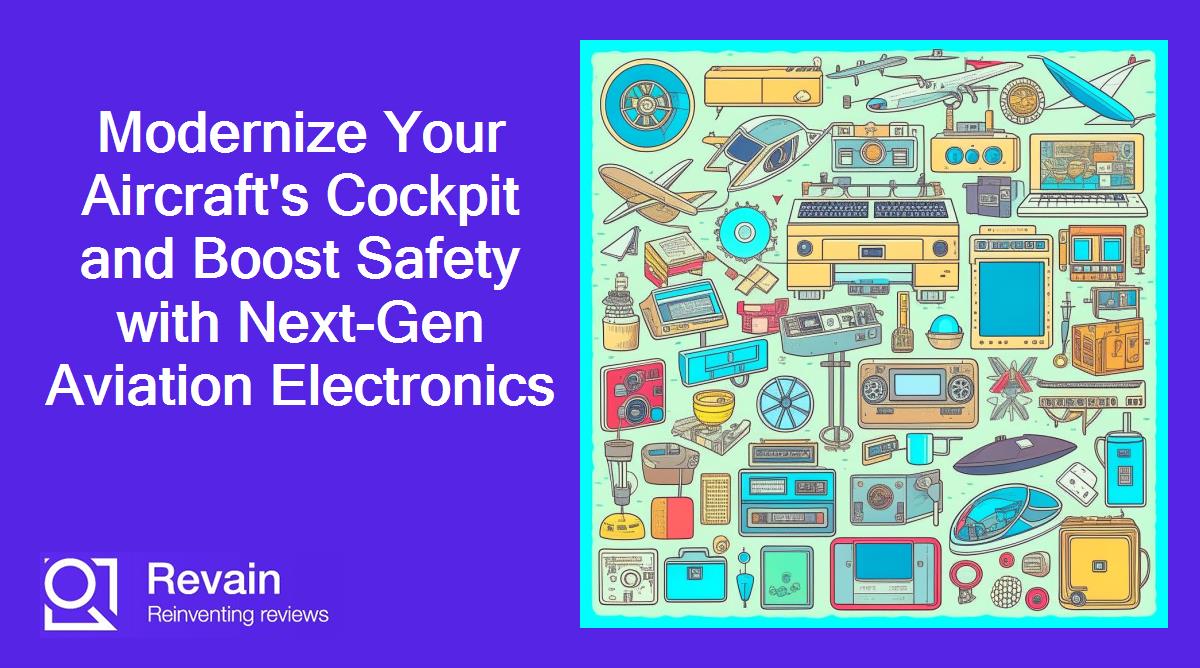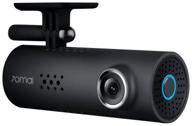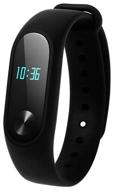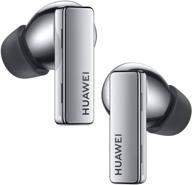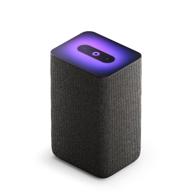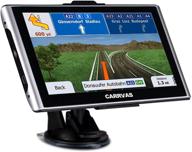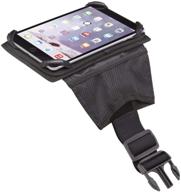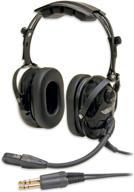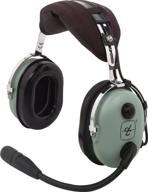The Latest Aviation GPS Units for Pilots
Global Positioning System (GPS) units have become an essential tool for pilots. They provide accurate location and navigation data that helps pilots navigate airspace safely and efficiently. As technology improves, new aviation GPS models are released offering better features and capabilities over previous units.
Key Features of Modern Aviation GPS Units
- High-sensitivity receivers - New receivers can pick up weaker GPS satellite signals allowing for better coverage.
- ADS-B compatible - Many new units receive ADS-B signals for enhanced traffic and weather data.
- Bluetooth connectivity - Allows wireless transfer of flight plans and connects to aviation headsets.
- Geo-referenced charts and terrain data - Displays location on sectional charts and provides terrain warnings.
- Multi-constellation support - Uses other satellite constellations like GLONASS to improve accuracy.
Top Portable GPS Models
Portable aviation GPS units are popular among pilots that fly different aircraft. They are easy to move between planes and often less expensive than installed avionics.
| Model | Key Features |
|---|---|
| Garmin GPSMAP 196 |
|
| BendixKing AeroVue Touch |
|
Top Installed GPS Systems
For aircraft owners who want integrated avionics, installed panel-mount GPS systems are a great option. These systems allow for easier operation and interface with other avionics in the aircraft.
| Model | Key Features |
|---|---|
| Garmin GPS 175 |
|
| Avidyne IFD540 |
|
With built-in navigation and moving map capabilities, modern aviation GPS units provide pilots with greater awareness and control. As the technology continues advancing, prices become more affordable as well. Any pilot looking to upgrade their avionics should consider the latest GPS models available.
Must-Have Aviation Headsets for Clear Communication
A good aviation headset is critical for pilots to communicate clearly with air traffic control and passengers while flying. The loud noise in an aircraft cockpit can make unassisted conversation nearly impossible. Modern aviation headsets use advanced noise-reduction technology to cut down on ambient noise and enhance critical radio calls.
Key Features of Good Aviation Headsets
- Noise-cancelling microphones - Blocks out cockpit noise for clear transmissions.
- Comfortable ear cups - Form a tight seal to minimize noise without being too tight.
- Clear audio quality - Provides good frequency response for natural voice sound.
- Durable frames - Strong yet lightweight materials withstand the rigors of aviation use.
- Long battery life - Provides 30+ hours of use between charges for portable headsets.
Top Passive Noise Reduction Headsets
These affordable headsets use passive technology like tight ear seals and noise dampening materials to block noise.
| Model | Key Features |
|---|---|
| David Clark H10-13.4 |
|
| ASA HS-1A |
|
Another interesting products
Top Active Noise Reduction Headsets
Active noise reduction uses powered electronic technology to analyze and cancel ambient noise providing superior blocking capabilities.
| Model | Key Features |
|---|---|
| Bose A20 |
|
| Lightspeed Zulu 3 |
|
With modern noise reduction technology and comfortable designs, current aviation headsets provide the clear communication that pilots rely on. Considering factors like noise cancellation, fit, battery life, and bonus features like Bluetooth can help you select the perfect headset for your needs and budget.
In-Flight Entertainment Systems to Make Flying Fun
One of the best ways to make long flights more enjoyable is having an in-flight entertainment (IFE) system. These systems allow passengers to watch movies, play games, listen to music, and more. Airlines are installing advanced IFE technology to provide a better flying experience.
Key Components of In-Flight Entertainment
- Seatback displays - LCD touchscreens provide movies, games, etc. to each seat.
- Handheld devices - Tablets allow passengers expanded entertainment options.
- Central media server - Stores all entertainment content and streams it to devices.
- Satellite antenna - Receives live TV programming and internet connectivity while in-flight.
- WiFi routers - Allow passengers to use their own mobile devices for entertainment.
Enhanced Features of Modern IFE Systems
| Feature | Description |
|---|---|
| Live TV | Watch news, sports, and other live programs streamed via satellite. |
| Interactive games | Play against other passengers with trivia, card games, etc. |
| In-seat power | USB ports and AC power outlets at each seat to charge devices. |
| Personal device pairing | Sync your smartphone or tablet to the screen for expanded options. |
Top In-Flight Entertainment Providers
| Company | Key Features |
|---|---|
| Thales |
|
| Panasonic Avionics |
|
With rising passenger expectations, airlines are making significant investments into cutting-edge IFE technology. The latest systems aim to make flying not just bearable, but entertaining and even fun.
Keep Your Aircraft Connected with Satellite Communication Devices
Having connectivity while in-flight is becoming increasingly important for pilots. Satellite communication devices allow aircraft to stay linked to the ground for navigation updates, weather information, texting, and phone calls.
Types of Satellite Communication for Aviation
- Text and data only - Affordable option for position reporting and short messages.
- Voice calls - Make and receive phone calls just like on the ground.
- Wireless hotspot - WiFi router shares the satellite connection with multiple devices.
- Aviation specific - Solutions optimized for airspace navigation and weather data.
- Portable - Self-contained units that are easily transferable between aircraft.
Top Portable Aviation Satellite Communicators
These popular portable units provide satellite voice and data connectivity anywhere you fly.
| Model | Key Features |
|---|---|
| Garmin inReach Mini |
|
| SkyCourier SwiftBroadband |
|
Similar products
Installed Satellite Communication Systems
Permanently installed options provide seamless connected aviation experience.
- Gogo AVANCE (ATG) - Uses cellular towers for continental US coverage.
- Honeywell JetWave - Elite business jet connectivity system.
- Thales TopFlight - Global aero ground, maritime, and land-based satellites.
Satellite communication enables pilots to fly with greater situational awareness and have information at your fingertips. With emerging technology, systems are smaller and more affordable than ever.
Modernize Your Cockpit with Digital Instrumentation
Transitioning from analog to digital instrument displays is one of the best ways to modernize an aircraft's cockpit. Digital systems integrate multiple flight instruments into easy-to-read screens that declutter the panel and reduce pilot workload.
Top products in 🛩️ Aviation Electronics
Benefits of Digital Cockpit Displays
- Integrated information - Combines navigation, engine, and environment data.
- Reduced clutter - Replaces multiple analog gauges with clean LCDs.
- Customization - Allows pilots to prioritize the most useful data.
- Safety features - Incorporates terrain awareness and traffic alerts.
- Weight savings - Lighter than traditional instrumentation.
Types of Digital Instrumentation
| System | Details |
|---|---|
| Glass cockpit | Multiple interactive LCD screens with flight and navigation information. |
| Engine monitoring system | Digital gauges to monitor engine performance and fluids. |
| EFIS | LCD displays that integrate flight and navigation data. |
| EICAS | Monitoring system for engine instrumentation and crew alerts. |
Top Digital Cockpit Upgrade Solutions
- Garmin G1000 - Popular glass cockpit system for private aircraft.
- Aspen Avionics - Customizable EFIS displays for VFR and IFR.
- Dynon Avionics - Affordable glass cockpit and EFIS options.
- J.P. Instruments - Leading engine monitoring systems for pistons and turbines.
Upgrading to digital cockpit displays provides pilots with cleaner, more integrated instrumentation. Current generation systems are smaller, more affordable, and easier to install than ever. Any older aircraft can benefit from joining the glass cockpit revolution.
Choose the Right Transponders and Navigation Systems
Transponders and navigation systems are critical avionics that help pilots communicate with air traffic control and navigate safely. Choosing the right equipment for your mission and aircraft is key.
Types of Transponders
- Mode A/C - Transmits identity and altitude to radar tracking systems.
- Mode S - Provides more detailed flight information to ATC centers.
- ADS-B Out - Broadcasts real-time position and velocity data.
Features to Look for in Transponders
- FAA 2020 mandate compliance - Meets ADS-B Out requirements.
- Dual-channel receiver - More reliable operation.
- WAAS position input - Improves ADS-B accuracy.
- 1090ES capability - Enhanced surveillance performance.
- Squawk code presets - Allows pilots to quickly enter common codes.
Types of Navigation Systems
- VOR - Receives signals from ground-based VHF Omni Range beacons.
- ILS - Tuned to Instrument Landing System for precision approaches.
- GPS - Global Navigation Satellite System receiver.
- DME - Distance Measuring Equipment for positional data.
- ADF - Automatic Direction Finder for locating non-directional beacons.
Important Navigation System Features
- CDI interface - Provides course deviation indicators on EFIS.
- WAAS - Augments GPS for approach capability.
- Glideslope - Displays vertical ILS guidance.
- Nav database - Frequent AIRAC cycle updates.
- Dual systems - VOR or GPS navigation in single unit.
The right avionics ensure pilots have the capability to operate safely in managed airspace. Understand the differences when choosing new transponders and navigation systems.
How to use your Amazon Prime to buy Aviation Electronics
Amazon Prime offers fast, free shipping and great prices on millions of items, making it a great way to purchase aviation electronics. Here are some tips for Prime members looking to buy their next aviation gadget.
Search for FAA-Approved Products
When buying aviation electronics like headsets, GPS units, and radios - be sure to look for FAA-approved devices from reputable aviation brands. Search for keywords like "FAA-Approved" or "TSO Certified" to filter results. The FAA approval indicates the product meets technical standards for aviation use.
Take Advantage of Free Two-Day Shipping
One of the best perks of an Amazon Prime membership is free two-day shipping on most products. When you need to quickly receive an item like a new headset or transponder, this fast delivery is invaluable. Just look for items labeled "Prime Eligible" to confirm the quick shipping at no extra cost.
Use Prime Trials to Test Products
You can sign up for a free 30-day Amazon Prime trial to evaluate products before fully committing. This allows you to test out electronics with free returns during the trial period. It's a great way to experience Amazon's fast shipping and try aviation gear first-hand.
Check for Amazon Warehouse Deals
Quality used and open-box electronics are often available from Amazon Warehouse at significant discounts. Search for deals on refurbished aviation gadgets like GPS units, tablets, and more. Items are rated based on their condition to set expectations.
With access to thousands of aviation products and fast free delivery, an Amazon Prime membership is a great asset for pilots. Focus your search appropriately and take advantage of Prime benefits to conveniently purchase your next aviation electronics upgrade.
Connectors For Aviation Electronics
Aviation electronics require connectors that are reliable, stable, and easy to use. JAE Japan Aviation Electronics Industry, Ltd. is a leading manufacturer of electrical connectors, including board-to-board connectors that feature a rotating actuator, a ZIF structure that makes it easy to insert or extract the FPC, and excellent usability in a space-constrained environment. JAE offers a wide range of connectors for various applications, including in-vehicle USB 3.2 and DisplayPort 1.4 compatible board-to-cable connectors. JAE's connectors are highly stable and reliable, with a proven contact structure that has been used for decades. JAE's board-to-board connectors are ideal for internal connections of industrial equipment and other applications. JAE's connectors are available through distributors such as HeilindAsia.
What Are The Different Types Of Connectors Used In Aviation Electronics?
Aviation electronics require different types of connectors that are reliable, efficient, and meet specific requirements. Here are some of the most common types of connectors used in aviation electronics:
What Are The Differences Between Class A And Class C Connectors In Aviation Electronics?
Class A and Class C connectors are two of the five basic classes of AN connectors used in most aircraft. Here are the differences between Class A and Class C connectors in aviation electronics:
Class A connectors are solid, one-piece back shell general-purpose connectors. They are the most common type of AN connectors and are considered general-purpose connectors that support a variety of electrical applications.
Class C connectors, on the other hand, are pressurized connectors with inserts that are not removable. They are similar to Class A connectors in appearance, but the inside sealing arrangement is sometimes different. Class C connectors are used on walls or bulkheads of pressurized equipment.
In summary, the main difference between Class A and Class C connectors is that Class A connectors are solid, one-piece back shell general-purpose connectors, while Class C connectors are pressurized connectors with inserts that are not removable and are used on walls or bulkheads of pressurized equipment.






